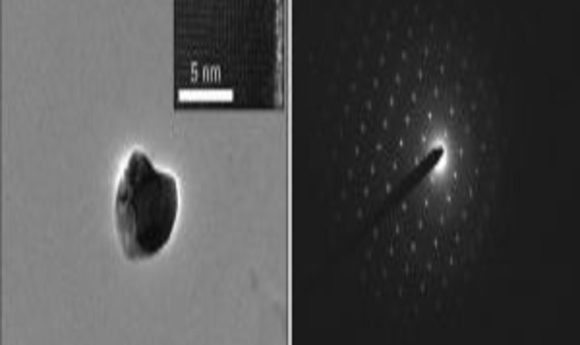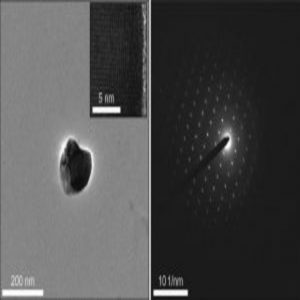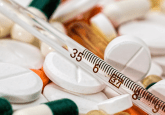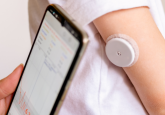Could a white pigment be a cause of Type 2 diabetes?

A study has found crystals of a common white pigment in pancreas specimens of those with Type 2 diabetes, suggesting there could be a link between the disease and pigment.

An extracted TiO2 crystal from the pancreas of a Type 2 diabetes sufferer and the resulting electron diffraction pattern. Credit: Cockrell School of Engineering, The University of Texas at Austin.
A team of researchers from The University of Texas at Austin (TX, USA) has conducted a pilot study in which they discovered that titanium dioxide (TiO2) crystals were present in pancreas specimens of Type 2 diabetes (T2D) sufferers.
TiO2 is a very common white pigment and is utilized in products ranging from candies to paint. Titanium compounds are not a known component of any human tissue, so the findings were surprising.
The study, published in Chemical Research in Toxicology, details how the team surveyed 11 pancreas specimens. Eight were from people with T2D and three were from those without T2D. The TiO2 crystals were present in all samples from T2D sufferers; however, none were in the three from those who weren’t T2D sufferers. There were over 200 million TiO2 crystallites per gram of TiO2 particles in the T2D specimens.
Study leader and professor in the McKetta Department of Chemical Engineering in the Cockrell School of Engineering, Adam Heller, explained, “Our initial findings raise the possibility that T2D could be a chronic crystal-associated inflammatory disease of the pancreas, similar to chronic crystal-caused inflammatory diseases of the lung such as silicosis and asbestosis.”
Previous to the 20th century, lead was often utilized as the base to many different pigments. During the 20th century, these were replaced with TiO2 due to the high toxicity of lead-based products. Since then, it has become the most commonly used white pigment with production increasing by 4 million tons over the past 50 years. It is utilized in many different products, including paints, foods, medications, toothpaste, cosmetics, plastics and paper.
“The increased use of titanium dioxide over the last five decades could be a factor in the T2D epidemic,” Heller said. “The dominant T2D-associated pancreatic particles consist of TiO2 crystals, which are used as a colorant in foods, medications and indoor wall paint, and they are transported to the pancreas in the bloodstream. The study raises the possibility that humanity’s increasing use of TiO2 pigment accounts for part of the global increase in the incidence of T2D.”
The team is keen to repeat the study with a larger sample, in order to cement their results.





